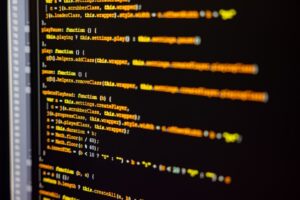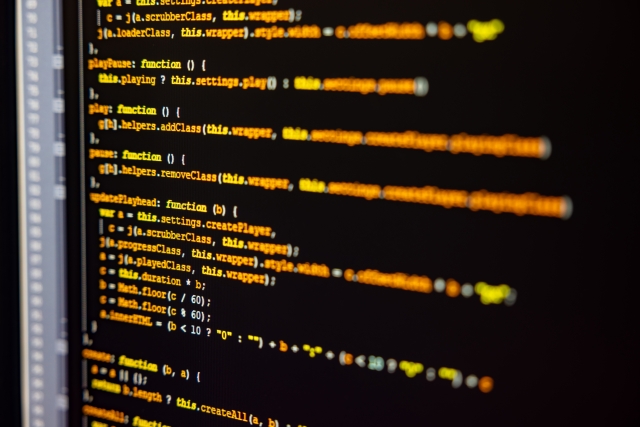Summary
Pandas is a popular Python library for data manipulation and analysis. It provides fast, flexible, and expressive data structures, making it easy to work with different types of data such as CSV, Excel, SQL databases, and more. With pandas, you can perform data cleaning, filtering, grouping, merging, and many other advanced operations, making it an essential tool for data scientists and analysts in various fields.
Detail

Sure, I’d be happy to explain Pandas with code examples in English, in a way that is easy for beginners to understand. Let’s start by installing Pandas first, as it is not part of the Python standard library:“`
!pip install pandas
“`Now, let’s import the Pandas library:“`
import pandas as pd
“`We will use the shorthand `pd` throughout this tutorial to refer to Pandas.## Data StructuresPandas provides two main data structures that we will work with: Series and DataFrame.### SeriesA Series is a one-dimensional labeled array that can hold any data type such as integers, floats, strings, and more. We can create a Series using a Python list, and Pandas will automatically assign row labels starting from 0:“`
# create a Series from a list
s = pd.Series([10, 20, 30, 40, 50])# print the Series
print(s)# output:
# 0 10
# 1 20
# 2 30
# 3 40
# 4 50
# dtype: int64
“`As you can see, the row labels are automatically assigned as integers starting from 0, and the data type is inferred as `int64` by default.We can also set custom row labels using the `index` parameter:“`
# create a Series with custom labels
s = pd.Series([10, 20, 30, 40, 50], index=[‘a’, ‘b’, ‘c’, ‘d’, ‘e’])# print the Series
print(s)# output:
# a 10
# b 20
# c 30
# d 40
# e 50
# dtype: int64
“`Now, the row labels are assigned as `a`, `b`, `c`, `d`, and `e`.We can access the elements of a Series using the row labels or the integer position:“`
# access an element by label
print(s[‘c’]) # output: 30# access an element by position
print(s[2]) # output: 30
“`We can perform arithmetic operations on a Series, such as addition, subtraction, multiplication, and division:“`
# add a scalar value to all elements
print(s + 5)# multiply all elements by a scalar value
print(s * 2)# divide all elements by a scalar value
print(s / 10)# output:
# a 15
# b 25
# c 35
# d 45
# e 55
# dtype: int64
# a 20
# b 40
# c 60
# d 80
# e 100
# dtype: int64
# a 1.0
# b 2.0
# c 3.0
# d 4.0
# e 5.0
# dtype: float64
“`### DataFrameA DataFrame is a two-dimensional labeled data structure that can hold multiple Series with different data types. We can create a DataFrame using a Python dictionary, where each key represents a column name, and each value represents a Series:“`
# create a DataFrame from a dictionary of Series
d = {
‘Name’: pd.Series([‘Alice’, ‘Bob’, ‘Charlie’, ‘Dave’]),
‘Age’: pd.Series([25, 30, 35, 40]),
‘Salary’: pd.Series([50000, 60000, 70000, 80000])
}df = pd.DataFrame(d)# print the DataFrame
print(df)# output:
# Name Age Salary
# 0 Alice 25 50000
# 1 Bob 30 60000
# 2 Charlie 35 70000
# 3 Dave 40 80000
“`As you can see, each column is a Series with its own row labels, and the DataFrame has row labels starting from 0.We can access individual columns of a DataFrame using the column names:“`
# access a column by name
print(df[‘Name’]) # output: 0 Alice
# 1 Bob
# 2 Charlie
# 3 Dave
# Name: Name, dtype: object
“`We can also access multiple columns by passing a list of column names:“`
# access multiple columns by name
print(df[[‘Name’, ‘Age’]]) # output: Name Age
# 0 Alice 25
# 1 Bob 30
# 2 Charlie 35
# 3 Dave 40
“`We can filter rows based on a condition:“`
# filter rows by condition
filtered_df = df[df[‘Age’] > 30]# print the filtered DataFrame
print(filtered_df)# output:
# Name Age Salary
# 2 Charlie 35 70000
# 3 Dave 40 80000
“`Here, we are filtering the rows where the age is greater than 30.We can group rows by a column and perform aggregation functions such as sum, mean, count, and more:“`
# group by a column and perform aggregation
grouped_df = df.groupby([‘Age’]).sum()# print the grouped DataFrame
print(grouped_df)# output:
# Salary
# Age
# 25 50000
# 30 60000
# 35 70000
# 40 80000
“`Here, we are grouping the rows by age and calculating the sum of the salary column for each age.These are just a few examples of what we can do with Pandas. The library provides many more functions and methods for data manipulation and analysis, which we will explore in more detail in future tutorials.


コメント